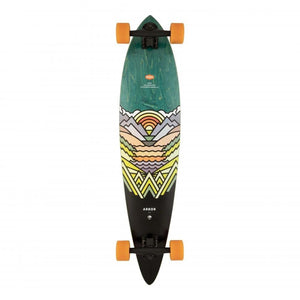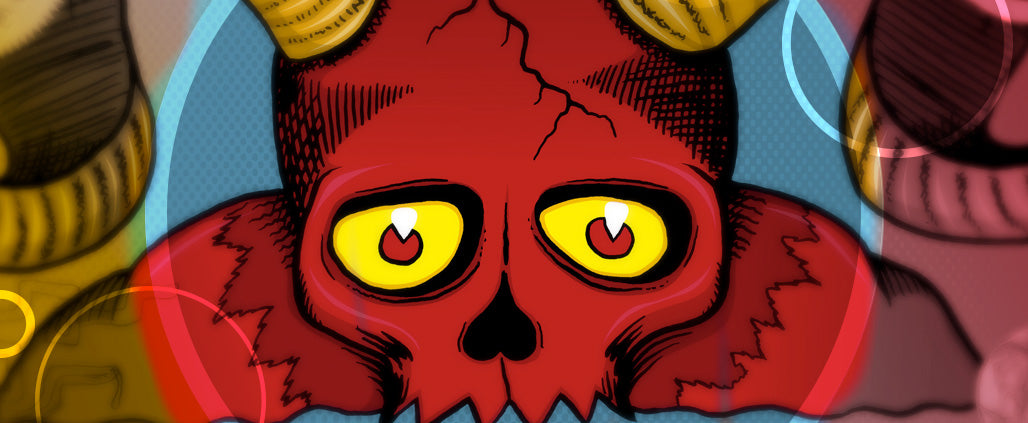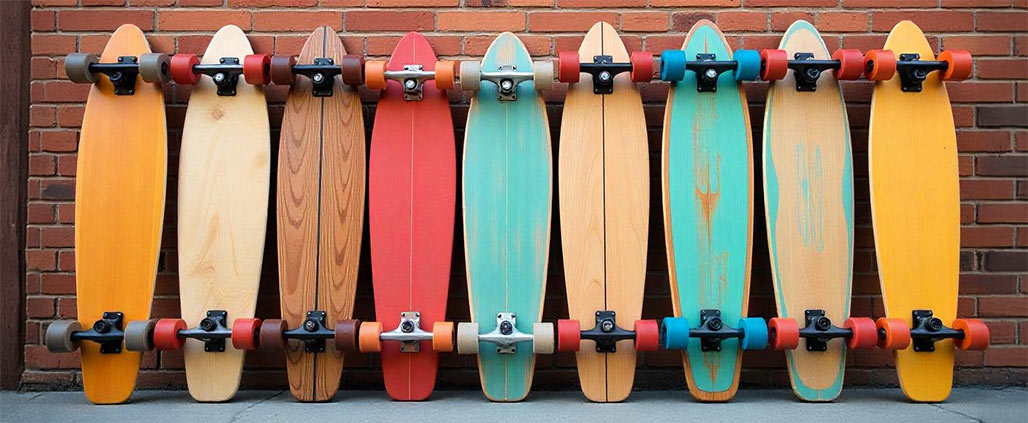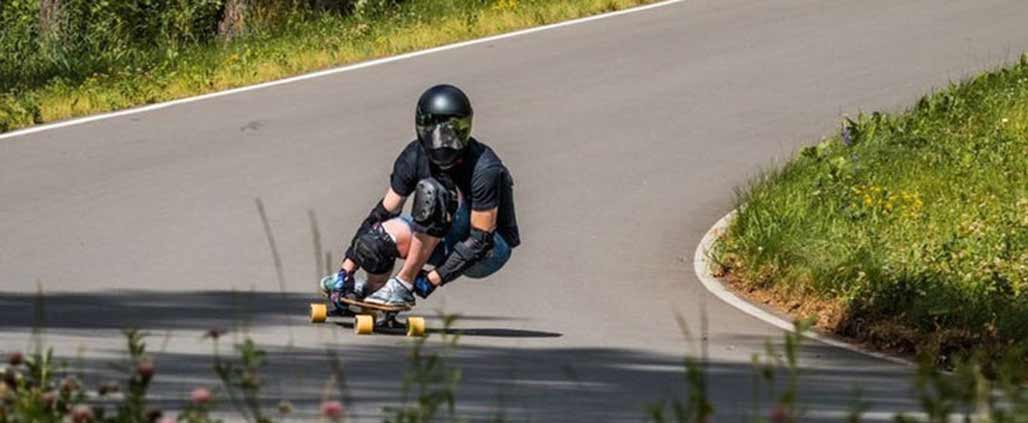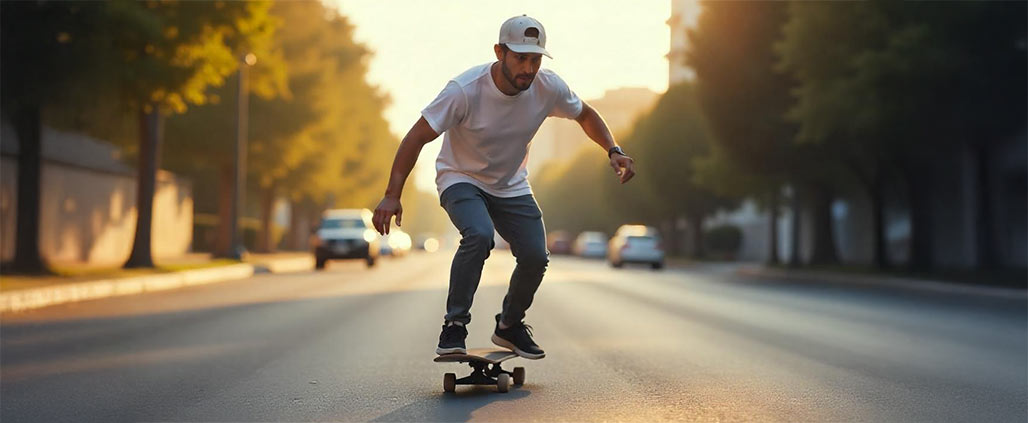
Understanding Longboard Completes: The Ultimate Buyer's Guide 2025
Hey there, fellow riders and soon-to-be longboarders! Thinkin' about picking up a new complete longboard but not sure where to start? I've been riding, building, and occasionally faceplanting off longboards for over 15 years, and I'm here to help you navigate the awesome world of longboard completes.
Key Takeaways:
- A complete longboard comes fully assembled and ready to ride out of the box
- Your riding style (cruising, downhill, freestyle, etc.) should determine the board you choose
- Beginners should prioritize stability and ease of use over technical features
- Quality trucks and wheels make a massive difference in your riding experience
- Most quality longboard completes range from $100-$300, depending on components
What Are Longboard Completes?
When we talk about a "complete" longboard, we're referring to a fully assembled board that's ready to ride right when you unbox it. Unlike building a custom setup (which is awesome but can be overwhelming for beginners), a complete setup comes with all the essential parts already put together by the manufacturer.
A typical longboard complete includes:
- The deck (the board itself)
- Trucks (the metal axles that hold the wheels)
- Wheels
- Bearings (the little rings that make the wheels spin smoothly)
- Grip tape (the sandpaper-like surface on top)
- Hardware (nuts and bolts)
The beauty of buying a complete is that someone who knows what they're doing has already matched compatible components together. This takes the guesswork out for ya, especially if you are still learning the difference between a kingpin and a bushing.
I remember my first complete - a Sector 9 cruiser that I thought was the coolest thing ever. It wasn't the fanciest, but man, it was perfect for learning on. That's what makes completes so great for newcomers – you don't need to know everything to get started on something decent.
Types of Longboard Shapes and Styles
Longboards come in various shapes and sizes, each designed for specific riding styles and preferences. Let's break down the most common types:
Pintail Longboards
Pintail longboards have that classic surfboard-inspired shape with a narrow pointed tail. These are perfect for cruising around town or campus. The shape helps prevent wheel bite (when your wheels touch the deck during turns) and gives you a surfy feel. They're pretty much the go-to choice for casual riders who want something stable and smooth for gentle carving.
Drop-Through Longboards
Drop-through longboards have trucks mounted through the deck rather than underneath it. This lowers your center of gravity, making the board more stable at higher speeds and easier to push for long distances. If you're planning on commuting or doing some mild downhill, these are awesome.
Drop-Down Longboards
Similar to drop-throughs, drop-down longboards have a lowered platform between the trucks. This makes them super stable and easy to push, perfect for beginners or anyone looking to cruise comfortably for long distances without getting foot fatigue.
Top-Mount Longboards
These have the trucks mounted directly to the bottom of the deck. They sit higher off the ground but offer more leverage for turns, which makes them responsive and agile. Many downhill and freeride setups use this mounting style for the extra control it provides.
Mini-Cruisers and Cruiser Boards
Cruiser boards are shorter than traditional longboards but longer than street skateboards. They're nimble, portable, and perfect for navigating crowded areas or stashing in a locker. Think of these as the city-friendly option for when you don't need something massive.
Choosing the Right Longboard Based on Riding Style
Your riding style is the biggest factor in choosing the right longboard. Here's how to match your intentions with the right board:
For Cruising and Commuting
If you're mainly looking to cruise around town, commute to work or school, or just enjoy casual rides, look for:
- Medium-sized boards (32-38 inches)
- Softer wheels (78-83a durometer)
- Flexible decks that absorb vibration
- Drop-through or drop-down mounting for easier pushing
Cruising longboards are designed to be comfortable over distance and won't tire you out as quickly. Many of my friends who got into longboarding for transportation stuck with these styles cause they're just practical.
For Downhill and Freeride
If speed is your thing and you wanna bomb hills or slide around corners:
- Stiffer decks with minimal flex
- Wider trucks for stability
- Wheels with rounded lips for controlled slides
- Concave decks that lock your feet in place
Downhill longboards are built for stability at speed, while freeride longboards focus on controlled sliding and technical riding. These ain't for beginners, though - I learned that the hard way with some road rash stories I won't bore you with!
For Freestyle and Dancing
If you're interested in tricks, steps, and technical riding:
- Longer decks (40-48 inches) for dancing
- Symmetrical shapes for riding switch
- Kicktails for tricks
- Medium flex for pop and response
Freestyle longboards and dancing longboards give you the platform to express yourself and get creative with your riding. They're basically the longboard equivalent of a dance floor.
For Beginners
As a beginner, prioritize:
- Stability over maneuverability
- Wider decks for more foot room
- Drop-through or drop-down mounting for lower center of gravity
- Medium-soft wheels for grip and smoothness
Beginner longboards focus on giving you confidence while you learn. I always tell new riders to start with something stable - you can always progress to something more technical later.
Understanding Longboard Components
While complete boards come pre-assembled, understanding the components helps you know what you're riding and what to upgrade if needed down the road.
Decks
The deck is the wooden (or sometimes composite) board itself. Key features include:
- Length: Generally 32-48 inches. Longer boards are more stable but less maneuverable.
- Width: Usually 8.5-10 inches. Wider decks provide more foot space.
- Flex: Ranges from very stiff to very flexible. More flex absorbs shock but reduces stability at speed.
- Concave: The curvature across the width of the board. Deeper concave locks your feet in better.
Many decks are made from maple, bamboo, or a combination. Bamboo longboards tend to be more flexible and lively, while maple decks are often stiffer and more durable.
Trucks
Trucks are arguably the most important component as they determine how your board turns and feels. Most longboard completes come with reverse kingpin (RKP) trucks, which are designed for carving and stability.
Key truck considerations:
- Width: Should match your deck width
- Baseplate angle: Higher angles (50°) turn more responsively; lower angles (44°) are more stable
- Bushing hardness: Softer bushings turn easier; harder bushings provide more stability
Quality trucks make a world of difference. Brands like Paris, Caliber, and Bear are commonly found on good completes.
Wheels
Wheel characteristics can drastically change your riding experience:
- Diameter: Usually 65-75mm for longboards. Larger wheels roll over obstacles better and maintain speed.
- Durometer (hardness): Measured on the A scale. Softer wheels (78a-83a) grip better and ride smoother. Harder wheels (85a+) slide easier and are more durable.
- Shape: Square-lipped wheels grip better; round-lipped wheels slide easier.
For most beginners and cruisers, I recommend softer wheels around 70mm. They'll give you a smoother ride over rough pavement, which is way more enjoyable when you're starting out.
Bearings
Bearings affect how freely your wheels spin. Most completes come with decent bearings, but they're often the first thing worth upgrading if you want a faster ride. Bearings are rated with the ABEC scale, but take that with a grain of salt - it doesn't tell the whole story about quality.
Beginner-Friendly Longboard Completes
When you are just starting out, you don't need to spend a fortune. Here are some solid beginner-friendly completes that won't break the bank but aren't cheap junk either:
Sector 9 Completes
Sector 9 has been making quality longboards for decades. Their Complete Longboards like the Bamboo Series, offer great value around the $150-200 range and are perfect for learning.
Landyachtz Completes
Landyachtz Boards are known for quality construction and thoughtful designs. The Dinghy and Drop Cat are particularly popular for beginners due to their stability and quality components.
Arbor Completes
Arbor Collective makes beautiful boards with an emphasis on sustainability. Their drop-through completes like the Dropcruiser, providing excellent stability for beginners.
DB Longboards
DB Longboards offers well-made completes that are accessible to beginners while still having room to grow into as your skills develop.
I started a few friends on the Sector 9 Lookout, and they still ride them years later. That's the mark of a good beginner board – it shouldn't feel like something you'll outgrow immediately.
Premium Longboard Completes
Ready to invest in something higher-end? These premium completes offer advanced features, better components, and higher performance:
Loaded Boards
Loaded Boards represents the premium end of the market. Their decks feature advanced construction techniques like bamboo cores with composite layers. The Tan Tien and Dervish Sama are legends in the cruising and carving world, while the Icarus offers incredible flex patterns for a lively ride.
Rayne Longboards
Rayne Longboards makes high-performance boards favored by downhill and freeride riders. Their construction tends to be bombproof, with features like urethane rails to protect against impact damage.
Pantheon Boards
While not as widely available, Pantheon makes some of the most thoughtfully designed pushing and commuting boards on the market. They're worth seeking out if distance riding is your main interest.
Moonshine MFG
Moonshine boards feature unique construction with urethane rails and waterproof designs. They're built to last and perform at a high level.
The difference between premium and budget completes is definitely noticeable. When I upgraded to my first Loaded board after riding entry-level completes for years, the difference in response, durability, and overall feel was night and day. That said, premium isn't necessary to have fun - it's just more refined.
Brands Worth Considering
With so many brands on the market, it can be hard to know which are reputable. Here's a quick rundown of some trusted names in the longboard world:
Mainstream Quality Brands
- Sector 9 - Historic brand with excellent variety
- Landyachtz - Canadian brand known for quality and innovation
- Globe - Established brand with good entry to mid-level options
- Arbor - Eco-conscious with beautiful wood aesthetics
- Dusters California - Style-focused with solid performance
Premium/Performance Brands
- Loaded - High-end, performance-focused designs
- Rayne - Downhill and freeride specialists
- Pantheon - Pushing and commuting-focused excellence
- Zenit - Canadian brand with outstanding dancer boards
Budget-Friendly Options
- Retrospec - Affordable but still decent quality
- Magneto - Good value for money
- Krown - Entry-level pricing with acceptable quality
I've personally owned boards from about half of these brands, and there's something to appreciate in each price category. Even with my higher-end boards, I still grab my mid-range Sector 9 sometimes just cause it's fun and I don't worry about scratching it up.
Maintaining Your Longboard Complete
Once you've got your complete, a little maintenance goes a long way:
Regular Maintenance
- Keep your bearings clean and lubricated
- Check and tighten all hardware regularly
- Rotate your wheels to ensure even wear
- Store your board in a dry place away from extreme temperatures
When to Replace Parts
- Wheels: When cone-shaped or worn unevenly
- Bearings: When they don't spin freely or make grinding sounds
- Bushings: When they lose rebound or show cracks
- Grip tape: When it's worn smooth or peeling
One of the advantages of starting with a complete is that you learn which parts you might want to upgrade as you progress. Maybe you'll want softer bushings for deeper carves, or maybe you'll discover you need harder wheels for your local terrain.
Conclusion
A longboard complete is the perfect way to get rolling without the complexity of building a custom setup. Whether you're looking for a casual cruiser, a commuting vehicle, or the start of a downhill racing career, there's a complete out there that matches your needs.
My final advice? Don't overthink it too much for your first board. Pick something that matches your primary riding intention, from a reputable brand, and in your budget. The most important thing is to get out there and start riding! Your preferences will develop naturally as you gain experience, and then you can get more specific with your next setup.
Remember that even pro riders started on basic completes. It's the rider, not just the board, that makes the magic happen.
Frequently Asked Questions
How much should I spend on my first longboard complete?
For a quality beginner setup, expect to spend between $120-200. You can find cheaper options, but below $100 you'll typically encounter components that wear quickly or perform poorly. Think of it as an investment – a decent complete will last years with proper care.
What size longboard should a beginner get?
Most beginners do well with a board between 38-42 inches long and 8.5-9.5 inches wide. Drop-through or drop-down mounting styles will be more stable and easier to learn on. Avoid very short boards or specialized downhill boards when just starting out.
Are cheap Amazon/Walmart longboards worth buying?
Honestly, not really. While they might seem like a good deal, super-cheap completes (under $80) typically have dangerous flaws like trucks that break, wheels that stop spinning, or decks that snap. You're better off saving a bit more for something from a reputable skateboard brand.
Can I upgrade parts of my complete later on?
Absolutely! That's one of the great things about longboarding. Most riders start upgrading with better bearings, then maybe wheels or bushings as they develop preferences. The deck is typically the last thing you'd need to replace.
What's the difference between a longboard and a cruiser?
Cruisers are essentially shorter longboards, typically 28-32 inches long. They're more portable and maneuverable but less stable at speed than full-sized longboards. Many of the same principles apply to both, but cruisers are typically designed for urban environments rather than distance or speed.
How do I know if a longboard complete is good quality?
Look for recognized brand names, detailed component specifications, and proper construction features like multiple plies of maple or bamboo. Good completes will specify the brands of the trucks, wheels, and bearings used – generic descriptions are usually a red flag.
Is it better to buy a complete or build my own custom setup?
For beginners, completes are definitely the way to go. They take the guesswork out of component compatibility and are often better value. Building customs makes more sense once you have experience and specific preferences that aren't met by available completes.

